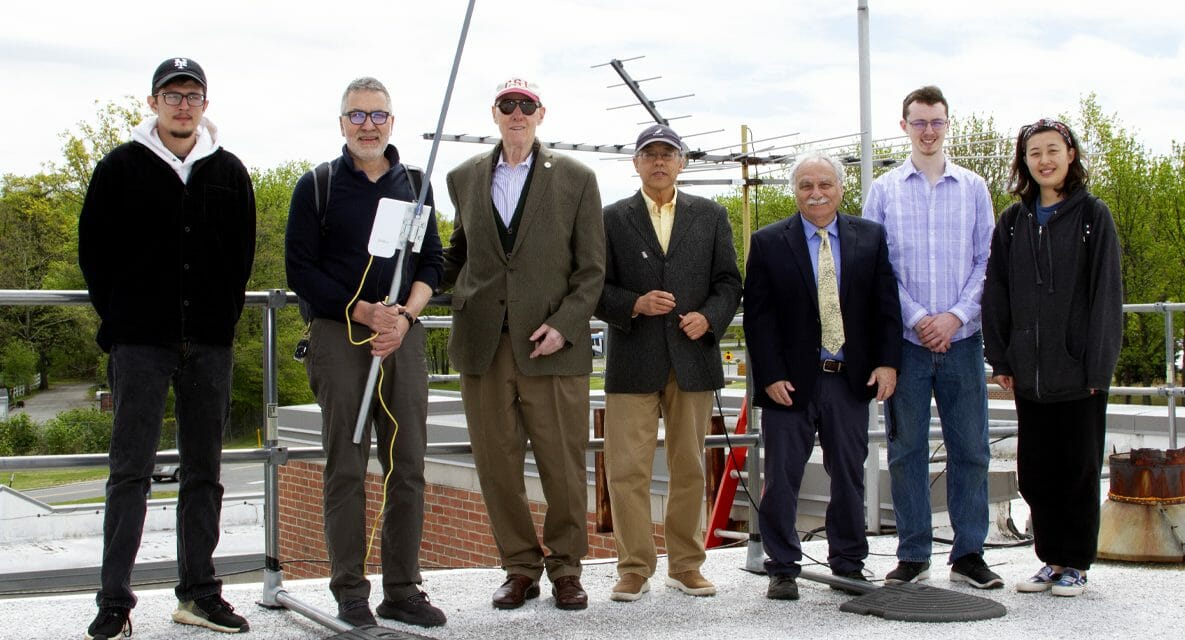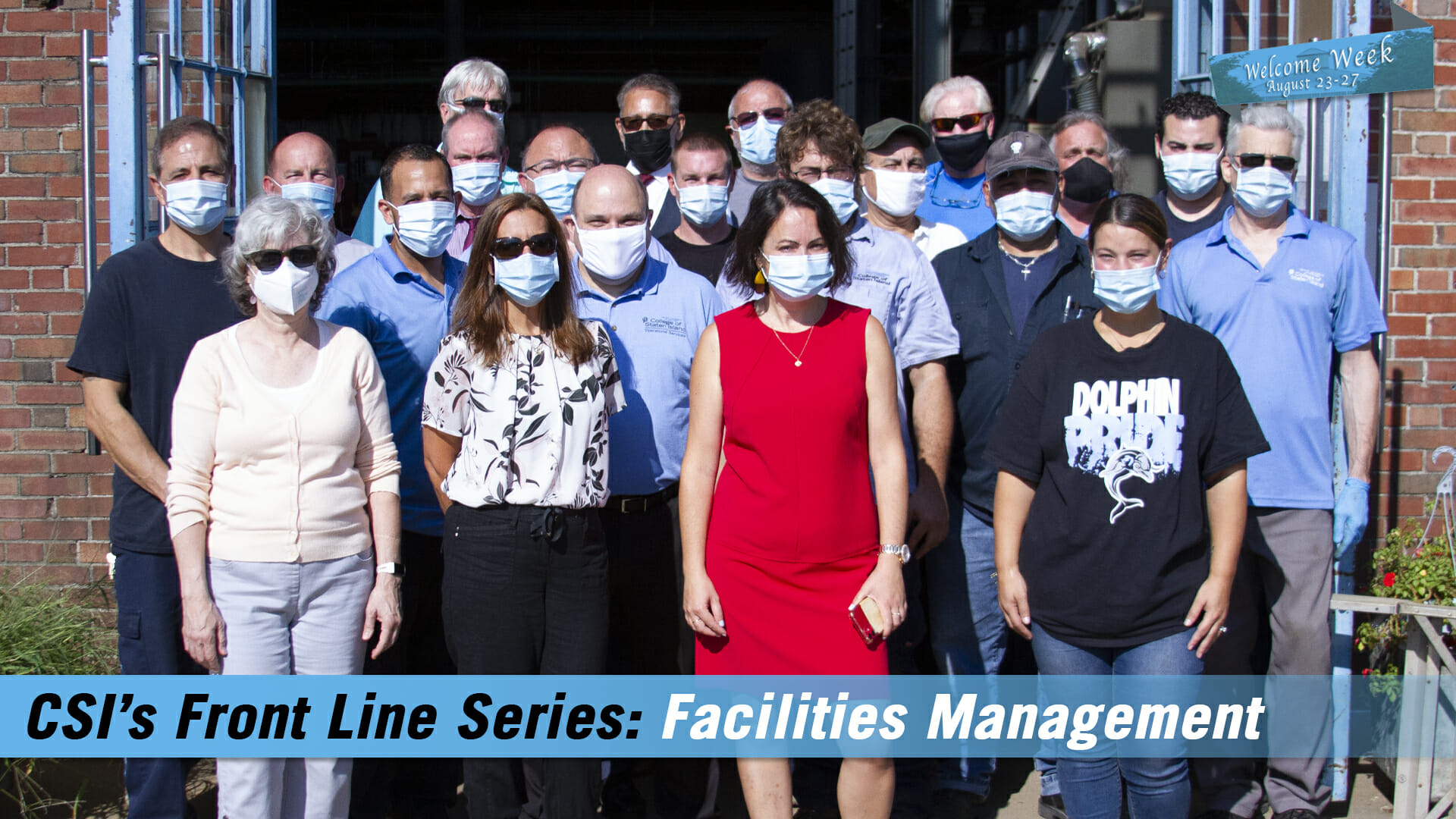The College of Staten Island is soon to be the site of a new FloodNet node with a gateway and sensors. FloodNet helps collect data that monitors flooding in an attempt to mitigate its impact on the City. It is the first of many gateways and sensors to be installed in the Borough.
FloodNet is a consortium between The City University of New York, NYU, and NYC City Administration (Mayor’s Office of Technology and Innovation and Mayor’s Office of Climate and Environmental Justice). The organization is in the process of installing a wide base of small radio transceivers that communicate with sensors on New York City streets that are constantly monitoring for flooding and relaying the status in real-time to the Cloud. The gateway and sensors on CSI’s campus are set to join other weather-related equipment on the roof of the campus’ Sports & Recreation Center (1R).
Professor Ricardo Toledo-Crow, Director of the Next Generation Sensor Laboratory at the CUNY Advanced Science Research Center is FloodNet’s central CUNY collaborator and is joined by College of Staten Island faculty including Professors Zhanyang Zhang, Tobias Schaefer, Michael Kress, and Alan Benimoff to help make the project a reality.
“FloodNet opens many research opportunities,” said Dr. Zhang, Associate Professor in Computer Science. “Researchers use this data to improve their current flood models or develop new models that can integrate machine learning techniques to better detect or predict flood events at different locations.”
According to Dr. Zhang, FloodNet also offers the opportunity for many stakeholders, on and off campus, to use the information for other avenues of research. “Studying flood events can have a huge impact on our local community,” he said. “For example, a team of CSI/CUNY faculty members and students are working on an interdisciplinary research project to model and simulate waterway oil and Combined Sewer Overflows (CSO) pollution, which often happen after flood events.”
When the FloodNet Gateway is constructed, it will be routed to CSI’s Weather Station Control Room housed in Building 1R. The Gateway is continuously sending data to the Cloud, and that information is then shared with NYC emergency services to mitigate events of dangerous flooding conditions in the area, as well as data accumulation to help adapt to a changing climate, potentially reducing its negative impact on the City.
“With the flood sensor data coming from specific locations, it makes the model prediction more accurate and local; therefore, it provides more actionable information,” said Dr. Zhang.
The data collected will also go a long way in the City’s assessment of flood prevention. “New York City has invested a lot of money in flood prevention measures and the data collected by the Gateway will tell us if those measures are working,” noted Dr. Kress, Professor Emeritus at CSI and The Graduate Center, CUNY. “It will also be a valuable guide as to where the City dispatches emergency crews as floods are happening in real-time, a key to damage prevention and public safety.”
CSI has long been known as a hub for weather-related research and its effect on the area. Also located on the roof of the Sports & Recreation Center is a New York State Mesonet Weather Station, the only one on Staten Island and one of 126 statewide that measures temperature, humidity, wind speed and direction, pressure, solar radiation, snow depth, and soil information. The equipment helps scientists monitor weather patterns in the moment and over time through the Weather Station Equipment Room. Dr. Benimoff recently used Mesonet data to research the microburst that occurred on CSI’s campus in August 2021, causing extensive damage. He has also utilized the precipitation data in studying Hurricane Ida. In addition, Mesonet data has been incorporated into a presentation entitled “A GIS study of the flooding from Hurricane Ida on Staten Island NY” at the Northeastern Section meeting of the Geological Society of America in Lancaster PA in March 2022.
The FloodNet Gateway promises to be another dynamic offering for monitoring weather patterns all over New York City.
In a recent feature on NY1 News, it was reported that over the next five years, the City plans to install 500 sensors in places across the City that see routine flooding. So far, 28 have been installed, mostly in clusters in the south Bronx, Red Hook and Gowanus in Brooklyn, southeast Queens, and in Harlem. CSI’s Gateway will be Staten Island’s first.
Check out the Online Gallery of photos taken at the site of the FloodNet Gateway.















